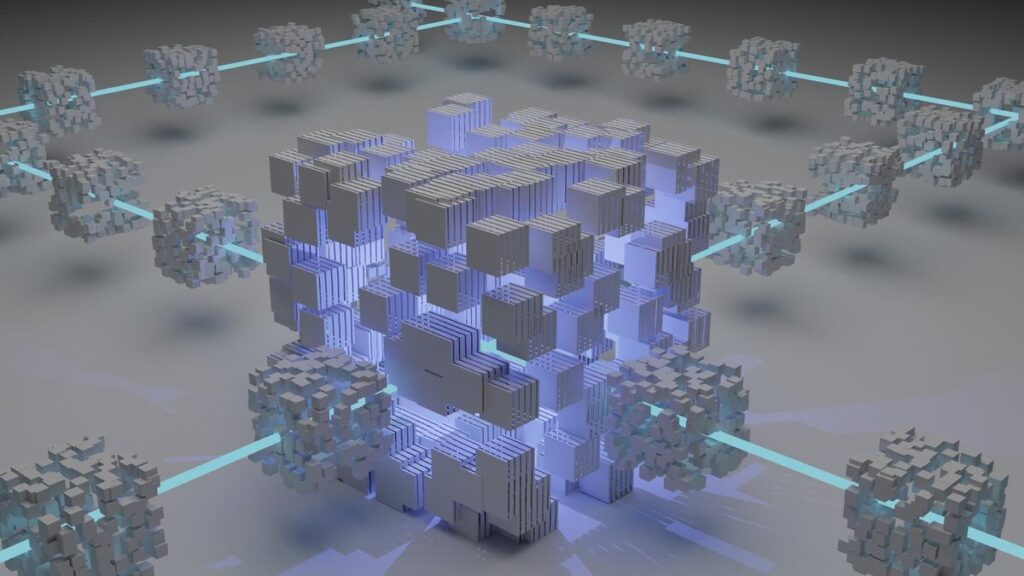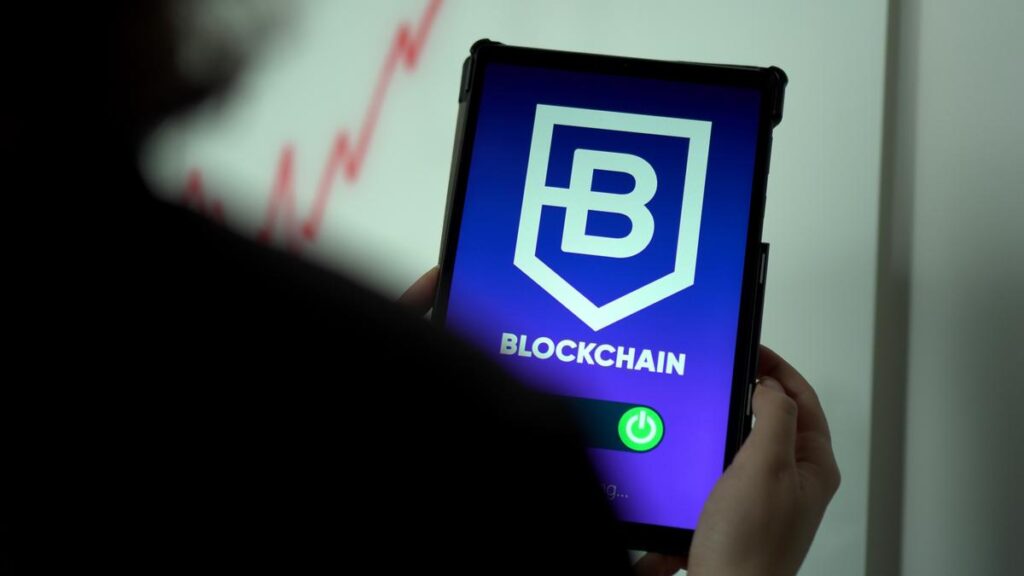What is Blockchain Technology?

Emerging as one of the most significant technological breakthroughs of the 21st century, blockchain technology stands at the frontier of a revolutionary shift in the digital information age. This ground-breaking technology brings with it a promise of decentralized operation, cryptographic security, and universal transparency that has the potential to redefine business operations, governance, and personal interactions. Through a unique and complex design, blockchain leverages distributed networks, thereby shaking the very foundation on which traditional centralized systems operate. Innovation doesn’t exist without challenges, and blockchain technology is no exception. Nevertheless, the potential benefits appear to hold the upper hand, fueling the drive towards integrating blockchain technology across a myriad of sectors. This article deciphers the intricacies of blockchain technology, its workings, real-world applications, prospective benefits, inherent challenges, and a peek into what the future might hold for this promising development.
A Blockchain Genesis
Picture the 2000s. A time when social media just began gaining traction, and the world was getting acclimated with fast, digital transactions. Then, emerges Bitcoin in 2008, a digital currency concept introduced in a white paper by an anonymous individual or group known as Satoshi Nakamoto. The underpinning technology that made it possible was blockchain.
Unraveling the Intricacies of Blockchain Technology
Blockchain, in its essence, is a series of records, or blocks, linked with each other using cryptography. Each block contains information that is securely packed and sealed with a unique hash code – a string of numbers and letters generated by an algorithm. The unique feature of this hash is that even a small change in the data alters the hash significantly, making it nearly impossible to tamper with.
Depicting the Digital Ledger
Envision a massive ledger, or a diary, storing a series of records, but it’s not in a dusty attic or secured bank vault. This ledger is digitally strewn across a vast network of computers, known as nodes. When a digital transaction is made, all nodes in the network validate it, creating a transparent, self-regulating system where each node checks and balances the other.
The Power of Decentralization
In many ways, blockchain technology is nothing extraordinary. It essentially records data, like traditional ledgers. However, its significance and revolutionary potential lie in its decentralization. Instead of a central authority like a bank or a government verifying transactions and maintaining records, the verification and record-keeping are distributed among network participants. This decentralized approach instills trust and transparency as all data is visible to the participants, and altering it would require the collusion of the majority, if not all, of the network participants, making it highly secure.
Peeking at Key Features
Beyond these features, two aspects of blockchain technology stand out. The first is its immutability. Once data gets recorded in a block, it cannot be altered or deleted since changing the data would alter the hash, breaking the chain with subsequent blocks. This secures the integrity and authenticity of the information.
The second noteworthy feature is anonymity. While all transaction records in the blockchain are transparent, the parties involved in the transaction remain anonymous. They are represented with unique identification strings, giving users control over their personal information in a world consumed by data concerns.
Diving into the World of Blockchain Technology
Blockchain technology, originally designed as the underlying structure for cryptocurrency like Bitcoin, has rapidly evolved and made its mark in several industries. These include healthcare, supply chain management, and cloud storage, to name a few. Striding forward in metaphorical five-inch heels, this technology is leaving substantial, lasting impressions on the landscape of tech innovation. It blissfully traverses the path of potential, seemingly untouched by any issues of trust or security.

Photo by theshubhamdhage on Unsplash
How does Blockchain work?
Deciphering The Mechanics of Blockchain Technology
At its core, blockchain utilizes a type of structure known as a ‘digital ledger’. This ledger bears a resemblance to basic accounting records, storing all transactions made with a specific variety of digital currency, most commonly Bitcoin, in the order of occurrence. What distinguishes it from a traditional ledger is the distribution of this digital ledger across every participant within a network, thus epitomizing ‘decentralization’.
Decentralization is a highly significant principle in blockchain technology. Instead of a single, dominant authority possessing and controlling all the data, the info is disseminated throughout a network of computers, or ‘nodes’. When a transaction is logged, it gets bundled in a ‘block’ along with other transactions conducted within the last ten minutes and then transmitted to the entire network.
Transparency and Security
But, how is the security and transparency of the network maintained? This is where the concept of “mining” comes into play. Miners are specific nodes on the network who take the data that is broadcasted and apply a complex algorithm to encrypt it, or hash it, into an succinct and unrecognizable form.
Once the data is hashed, the block is given a unique identifier, and is added to the blockchain in a linear, chronological order where it becomes virtually unalterable — providing the blockchain its characteristic immutability and transparency.
Cryptographic Protection
The aforementioned hashing process and its role in ‘mining’ a block are part of blockchain’s cryptographic protection. Cryptography is essentially a method of protecting information by transforming it into an unreadable format. Only those who have a special key, or decryption algorithm, can read or alter the information.
In blockchain, transactions are linked together with cryptographic hash. This literally means that one block in the chain includes the hash value of the block before it – creating a direct link between them. If a transaction in a block was altered, it would change the hash value of this block and break the chain.
To repair the chain, a hacker would need to change the hash value of not only the altered block, but every subsequent block in the chain, and they would need to do this faster than the other nodes were creating new blocks. This is highly unlikely, which is why blockchain’s cryptographic protection makes it highly secure.
Understanding Cryptographic Protection in Blockchain Technology
In essence, blockchain technology constructs a secure, decentralized network by synergizing an amalgamation of factors – a communal ledger, rigorous cryptographic protection, and an ongoing, collective verification of transactional data. This robust protection facilitates confident digital interactions across the network, establishing a new level of security and transparency.

Photo by theshubhamdhage on Unsplash
Real world use cases and applications of Blockchain Technology.
Applicability of Blockchain Technology in Finance
By paving the way for secure, transparent transactions, blockchain technology has drastically transformed the financial landscape. In the form of cryptocurrencies, like Bitcoin, blockchain has allowed people across the globe to manage, transact, and store their finances independently from traditional banking models. Cryptocurrencies provide superior security, substantial anonymity, and can be transferred globally with comparatively minimum transaction costs, which positions them as a captivating alternative payment gateway. Furthermore, this technology has redefined cross-border transactions, streamlining the process by eliminating intermediaries and enabling direct peer-to-peer transactions – making them faster, cheaper, and more efficient.
Blockchain Applications in Healthcare
In the healthcare sector, blockchain is used to secure and improve patient medical records. By storing patient data in a blockchain, providers can ensure complete security and confidentiality of patient information. In addition, blockchain technology enables all healthcare providers to have a unified and comprehensive view of a patient’s medical history, improving the delivery of care. Moreover, blockchain can be utilized for drug traceability, reducing the circulation of counterfeit drugs, ensuring that prescriptions are authentic and tracking drug supply chains to verify their sources.
Blockchain’s Role in Supply Chain Management
Blockchain technology also promises vast improvements in the area of supply chain management. It enables businesses to track a product’s journey from the manufacturer to the end-user with full transparency, increasing trust in product authenticity and quality. By documenting every transaction and movement of goods on a decentralized ledger, blockchain eliminates possibilities of fraud, reduces errors, and ensures that all parties are accountable for their roles. It also enables real-time tracking and tracing, enhancing efficiency and customer satisfaction.
Government Utilization of Blockchain Technology
Several governments globally are exploring blockchain technology for public sector applications. In Estonia, the government uses blockchain for digital identities, enabling citizens to securely access public, financial and medical services. The technology also proves useful in voting systems, creating a transparent and tamper-proof system that builds citizen trust and engagement. Additionally, government services such as land registry, tax management and public record keeping can be made more secure, efficient and transparent using blockchain technology.
Blockchain beyond Cryptocurrency
While cryptocurrency is the most known use of blockchain, the technology’s potential extends far beyond. For instance, blockchain can be utilized for tokenization, a method of converting rights to an asset into a digital token. This can be used to buy, sell and trade real assets in a digital format. Another impactful use of blockchain is in the creation of smart contracts – self-executing contracts with the terms of the agreement between parties directly written into lines of code. These contracts operate without a centralized authority or external enforcement mechanism, leading to peer-to-peer transactions that are trackable and irreversible.
Overcoming challenges and Unlocking Future Potential
As with any emergent technology, blockchain faces its fair share of constraints, most notably issues of scalability, the complexity of regulations, and a steep learning curve. However, these challenges are gradually being mitigated with progressive advancements in technology and sound policy formation. As barriers are broken down, the remarkable promise of blockchain technology is anticipated to permeate numerous sectors and applications beyond the current scope. Its potential to revolutionize energy trading, intellectual property rights management among others, paints a fascinating future for the utilization of blockchain technology.

Photo by theothermorthy on Unsplash
Advantages and Challenges of Blockchain Technology
The Multifaceted Advantages of Blockchain
Blockchain technology is opening up a plethora of opportunities, birthing a new era teeming with numerous untapped benefits. Foremost among these is transparency. The technology boasts a decentralized framework wherein data is spread across a network of computers or nodes, thereby making it highly resistant to fraudulent manipulations. Any alterations to the records would necessitate the consensus of all participating parties. This unparalleled transparency serves to fortify trust and reduce deceit.
Further, the efficiency and speed of transactions powered by the blockchain model dramatically outperform conventional banking systems. Traditional bank transactions, particularly cross-border ones, can be time-consuming, often taking days to finalize. On the contrary, thanks to its 24/7 operation, blockchain can authenticate and settle transactions within a matter of minutes, totally independent of time or geographical location.
Last but not least, blockchain technology offers an unmatched level of security. Once a transaction is given the green light and included in the chain, it is encrypted and connected to the preceding transaction, creating an impenetrable chain against hacking attempts. Additionally, the absence of a single central authority mitigates the risk of systemwide failure, further enhancing the system’s robustness.
Blockchain Beyond Cryptocurrencies
Though commonly associated with cryptocurrencies like Bitcoin, the use of blockchain extends to various fields. In supply chain management, for example, blockchain can provide a secured, immutable record of a product’s journey, from production to end consumer, reducing the chances of counterfeits. In healthcare, patient data stored on a blockchain could be accessed by authorized professionals instantly and securely, improving care coordination.
Moreover, in the public sector, blockchain can ensure fair and transparent elections by creating an tamper-proof voting system. In financial services, blockchain could eliminate intermediaries, reduce costs, and expedite transactions.
Understanding the Complexities
While it’s clear that blockchain technology holds immense promise, it’s also essential to recognize the hurdles associated with its implementation. For instance, as the number of nodes and transactions increase, scalability becomes a valid concern. This is because each transaction on the blockchain demands a share of computational power from every node in the network, which can potentially result in slowed system performance.
Then there’s the matter of understanding the technology itself. Blockchain’s intricacies, combined with its diverse applications, can often prove difficult to grasp for the uninitiated, leading to numerous misconceptions that can hinder its widespread adoption.
Furthermore, regulatory compliance remains a significant challenge. Given blockchain’s decentralized structure, it proves difficult for current regulations and legal frameworks to easily adapt. While cryptocurrencies have received the brunt of regulatory scrutiny, questions still surround the legality and jurisdiction of other blockchain applications.
And finally, we have the matter of privacy. While the encryption of transactions attempts to maintain their secrecy, the public nature of blockchain prevents total anonymity.
To sum up, the road for blockchain technology is paved with challenges such as scalability, complexity, regulatory issues, and privacy concerns, even as it boasts of enhanced transparency, security, and speedy transactions. Nonetheless, evolution in technology and learning can offer solutions to these roadblocks, potentially facilitating a broader application of blockchain across various sectors.

The Future of Blockchain Technology
Shaping Tomorrow with Blockchain Today
In the eyes of future-focused experts, blockchain technology, with its strong emphasis on decentralization, trustless transactions, and transparency, has emerged as the cornerstone of next-generation internet protocols. Since Bitcoin came into being, there have been continuous transformations and developments within the world of blockchain, largely setting the course for what lies ahead. This robust and revolutionary technology is anticipated to enable significant advancements across a wide range of sectors, effectively reshaping the face of modern tech-engagement.
Potential Advancements
Likely advancements in the blockchain realm involve increased scaling, privacy, and inter-connected blockchains. The dawn of Layer-2 solutions such as Lightning Network and Plasma will enhance transaction speeds and overall blockchain scalability. Meanwhile, projects like Zcash and Monero continually develop sophisticated cryptographic techniques to improve privacy in transactions, a trending necessity for many users.
The Era of Interconnected Blockchains
The future also anticipates the rise of interoperable blockchains. Various blockchain platforms operate in isolation currently, but projects like Polkadot and Cosmos aim to ensure seamless interaction between separate blockchain networks. This breakthrough could ensure the distributed exchange of any asset across different blockchain networks, fostering a truly interconnected blockchain ecosystem.
Wide-Spread Blockchain Adoption
Blockchain technology’s potential extends to numerous sectors, heralding a new phase of digitization. The most discussed application of blockchain is in the creation of digital currencies. It’s the technology underpinning cryptocurrencies like Bitcoin and Ethereum, and its use in this sector is expected to expand. Experts predict an increase in digital payments, with more businesses accepting cryptocurrencies as a means of transaction.
Blockchain Technology in Governance and Healthcare
Blockchain’s application in governance systems is another looming development. Blockchain can harbor increased transparency, citizen participation, and reduced bureaucracy in governmental operations. Similarly, healthcare systems are tipped to leverage this technology for securely storing and sharing patients’ medical records and managing pharmaceutical supply chains.
Reshaping The Financial Sector
Perhaps the most significant revolution triggered by blockchain technology will be in the financial realm. Blockchain is expected to enable faster, cheaper, and more secure transactions than current banking systems can offer. This has significant implications for remittances, cross-border payments, securities trading, and more.
Energy and The Environment
In the energy sector, blockchain technology can enable peer-to-peer energy trading, where homeowners with solar panels, for example, could sell surplus energy directly to their neighbors. This transformative model could decentralize energy grids and democratize access to energy resources.
Investment Landscape
As blockchain technology becomes more integrated into various sectors, it can dramatically alter the investment landscape. Crypto-assets, security tokens, and tokenized assets like real estate and art are expected to unlock liquidity and enable a wider scale of asset ownership. This potential for fractional ownership could democratize access to investment opportunities, reducing wealth inequalities.
The future of blockchain technology promises a myriad of advancements that could transform sectors ranging from finance to healthcare, energy, and even governance. While predictions are rooted in current trends and expert opinions, the pace of development and extent of adoption is still largely contingent on overcoming regulatory hurdles, ensuring data privacy, and surmounting issues related to scalability and energy consumption.

As the digital world evolves at a rapid pace, the prominence of blockchain technology continues to rise. This innovative technology holds the potential to bring about a new era of transparency, security, and decentralization. Despite the challenges, the advantages it presents stand to dramatically revolutionize a wide range of sectors, including but not limited to finance, healthcare, and government operations. While the road to widespread adoption might be fraught with complexities, strategically navigating these challenges will pave the way forward. The future might just be a blockchain-powered one, shifting the paradigms of digital operations and bringing forth a level of transparency and security that stands unheard of thus far. As we navigate this era of digital transformation, the strategic embrace of blockchain technology could very well determine which institutions rise to their zenith, and which are left behind.



